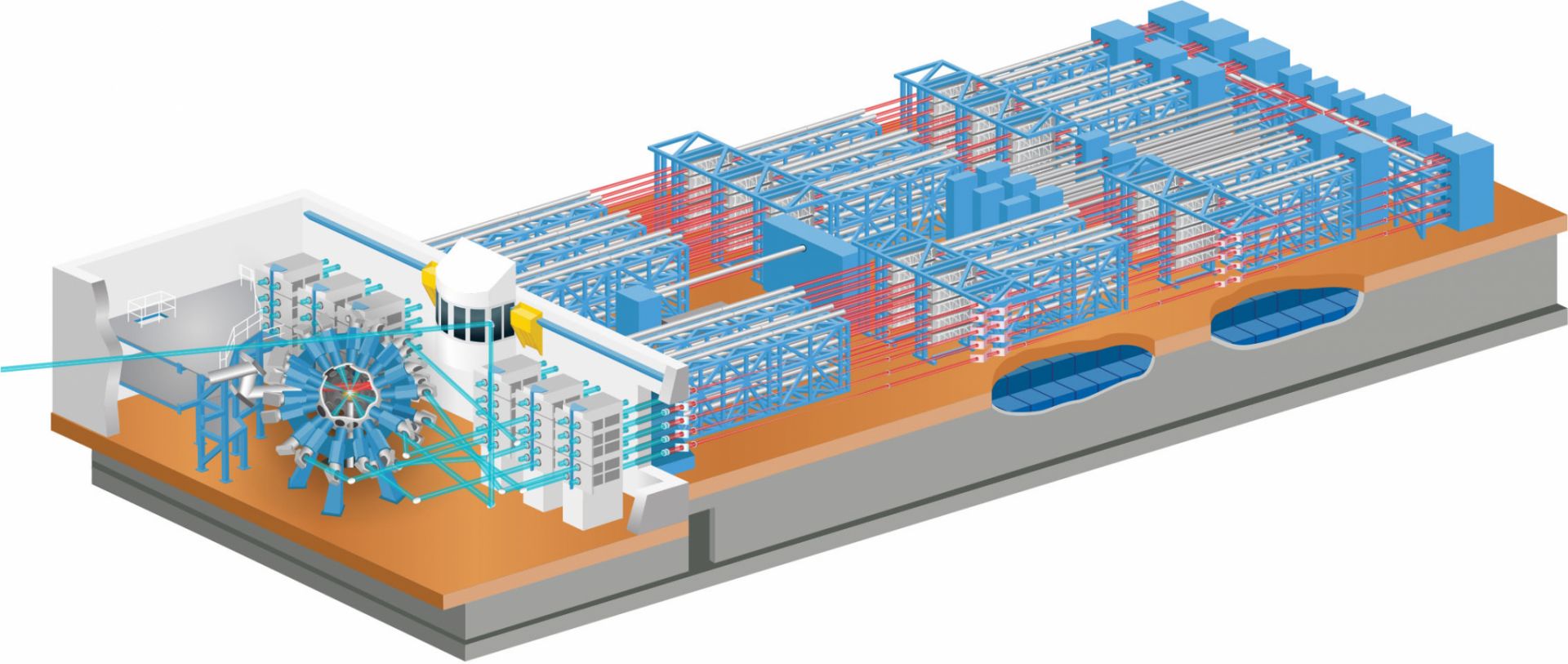Diagram of the University of Rochester Laboratory for Laser Energetics’ OMEGA laser system. (Image: University of Rochester)
A study recently published in Nature Communications brings a new perspective on how radiation travels through dense plasmas, potentially leading to a better understanding of the evolution of stars and the development of controlled nuclear fusion reactions. Researchers led by investigators at the University of Rochester Laboratory for Laser Energetics (LLE) achieved their findings by conducting experiments with LLE’s OMEGA laser system. This extensive system, which is 19 meters tall and 70 meters long, consists of 60 laser beams that can focus as much as 30,000 joules of energy onto a target for the study of nuclear and fluid dynamic events.
Methods: The study, titled “Probing Atomic Physics at Ultrahigh Pressure Using Laser-Driven Implosions,” was directed by Suxing Hu, associate professor of mechanical engineering and High-Energy-Density Physics Theory Group leader at LLE, and Philip Nilson, a senior scientist in LLE’s Laser-Plasma Interaction Group. Using the OMEGA laser system, researchers first created both a dense plasma containing copper atoms and X-rays. Hu explained, “Experiments using laser-driven implosions on OMEGA have created extreme matter at pressures several billion times the atmospheric pressure at Earth’s surface for us to probe how atoms and molecules behave at such extreme conditions. These conditions correspond to the conditions inside the so-called envelope of white dwarf stars as well as inertial fusion targets.”
The scientists then bombarded the plasma with the X-rays and used X-ray spectroscopy to analyze the movement of electrons between atomic energy levels and the emission or absorption of photons in the plasma. This analysis revealed the physical processes taking place as the radiation moved through the plasma.
Findings: The spectroscopic analysis indicated that changes in atomic energy levels that occurred as the radiation traveled through the plasma did not conform with the widely accepted continuum-lowering models of plasma physics. Rather, the observations supported a concept known as the density-functional theory (DFT), which provides a quantum mechanical description of atomic and molecular bonds in complex systems. Walter Kohn, of the University of California—Santa Barbara, was honored with the 1998 Nobel Prize in Chemistry for his development of DFT.
Significance: Science Daily quoted Hu: “This work reveals fundamental steps for rewriting current textbook descriptions of how radiation generation and transport occurs in dense plasmas. According to our experiments, using a self-consistent DFT approach more accurately describes the transport of radiation in a dense plasma.” Nilson further observed, “Our approach could provide a reliable way for simulating radiation generation and transport in dense plasmas encountered in stars and inertial fusion targets. The experimental scheme reported here, based on a laser-driven implosion, can be readily extended to a wide range of materials, opening the way for far-reaching investigations of extreme atomic physics at tremendous pressures.”
In other words, the data derived from this study could be applied to improving the plasma models used in analyzing the evolution of stars in high-energy-density physics. The data might also be applied to advance research into using controlled nuclear fusion for the production of energy.



